Finding an Optimal Rinse Aid for Glass and Plasticware
Published
November 18, 2021
The appearance of an institution’s dishes affects customers’ perceptions of the business. If glassware is spotty, or dishes have residue, customers often assume that the establishment, whether it’s a hospital, nursing home, restaurant, or university, is unsanitary. A rinse aid can help remove excess water and moisture from dishes after they are clean to ensure that glassware, plastic, stainless steel, and other washables are clear of spots and residue. Dishes will still be clean and will eventually dry without the use of a rinse aid, however, spots can appear as a result of water lingering for too long.
The Institutional Warewashing Process
Warewashing describes the act of collecting and washing any kitchen ware used in the preparation, serving, or storing of food. This could include pans, serving utensils, flatware, glasses, kitchenware, and trays. The process includes collecting the dirty items, prepping them by scraping excess debris off before washing and rinsing them. After washing, the dishes are sanitized and then dried and placed back in service to be used again.The right rinse aid can maximize cleaning performance and deliver spotless results with less time and effort. In the Industrial and Institutional setting, an optimal solution will reduce labor and drying time for both glass and plastic at high and low temperatures. For cafeterias, restaurants and other eating venues, this means they can spend less time manually and mechanically drying dishes, saving costs for both labor and energy.
What is a rinse aid?
A rinse aid is a formula that is mixed with water during the final rinse cycle. It reduces the surface tension of the water, allowing it to drain from dishes so that they dry more quickly and without the formation of water spots. A rinse aid is made up of surfactants, hydrotropes, solvents, and other co-polymers or aminocarboxylates.
What makes an ideal rinse aid surfactant?
The ideal rinse aid surfactant will contribute to a stable liquid film that drains off without leaving spots behind. To achieve this even drainage, a surfactant with a low-foam profile is desired because it decreases surface tension. The surfactant should also maintain performance at both high and low temperatures.
The challenge with plastic
As more types of plastic enter the institutional setting in the form of trays, dishes, and glasses, reduced spotting on these materials becomes increasingly important. Plastic dishes absorb less heat than other materials, which in turn leads to less water evaporation on the surface. This causes increased spotting and filming on plastic dishes.
Plurafac® LF RA-P
Plurafac® LF RA-P is a low-foaming, nonionic surfactant that consists of alkoxylated, predominantly unbranched fatty alcohols. Plurafac LF RA-P minimizes the effects of spotting and filming on plastics in industrial and institutional wash applications and exhibits low self-foaming behavior.
The Test Formula
To demonstrate the results delivered with Plurafac® LF RA-P, a test formula was developed to compare the performance of a formulation with Plurafac LF RA-P to the same formula with a traditional surfactant, and compare both to a benchmark. The test formula consisted of 50% deionized (DI) water, 30% Plurafac® LF RA-P, 20% sodium xylene sulfonate (SXS), a hydrotrope, and citric acid, in the amount needed to reach pH 7.0.
Rinse Performance at High Temperature
When tested at a wash temperature of 150F and a rinse temperature of 180F, the formula with the Plurafac® LF RA-P performed slightly better in visual ratings for spotting and filming than both the formula with the traditional surfactant, as well as the benchmark on melamine, polycarbonate, styrene-acrylonitrile, polypropylene, and glass.
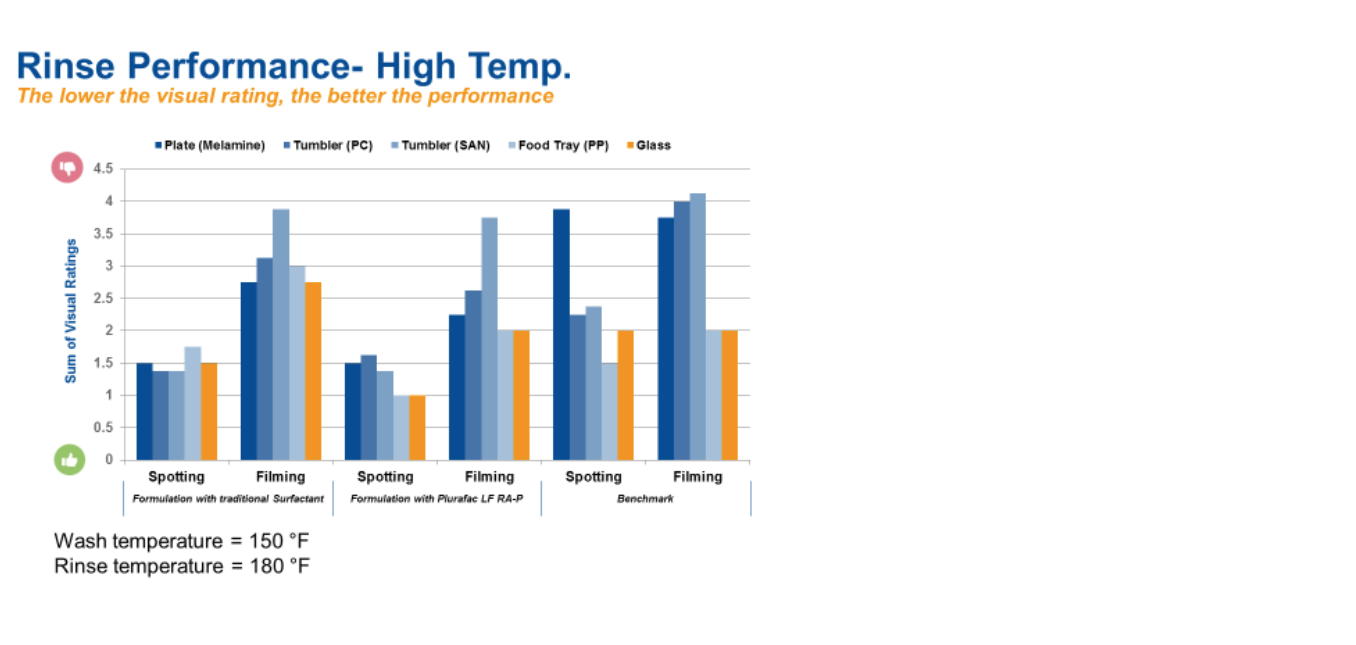
Rinse Performance at Low Temperature
When the temperature was reduced to 120F for both wash and rinse, the formula with Plurafac® LF RA-P and the formula with the traditional surfactant performed very similarly to one another as well as to the benchmark, except where they both outperformed the benchmark in visual rating on filming.
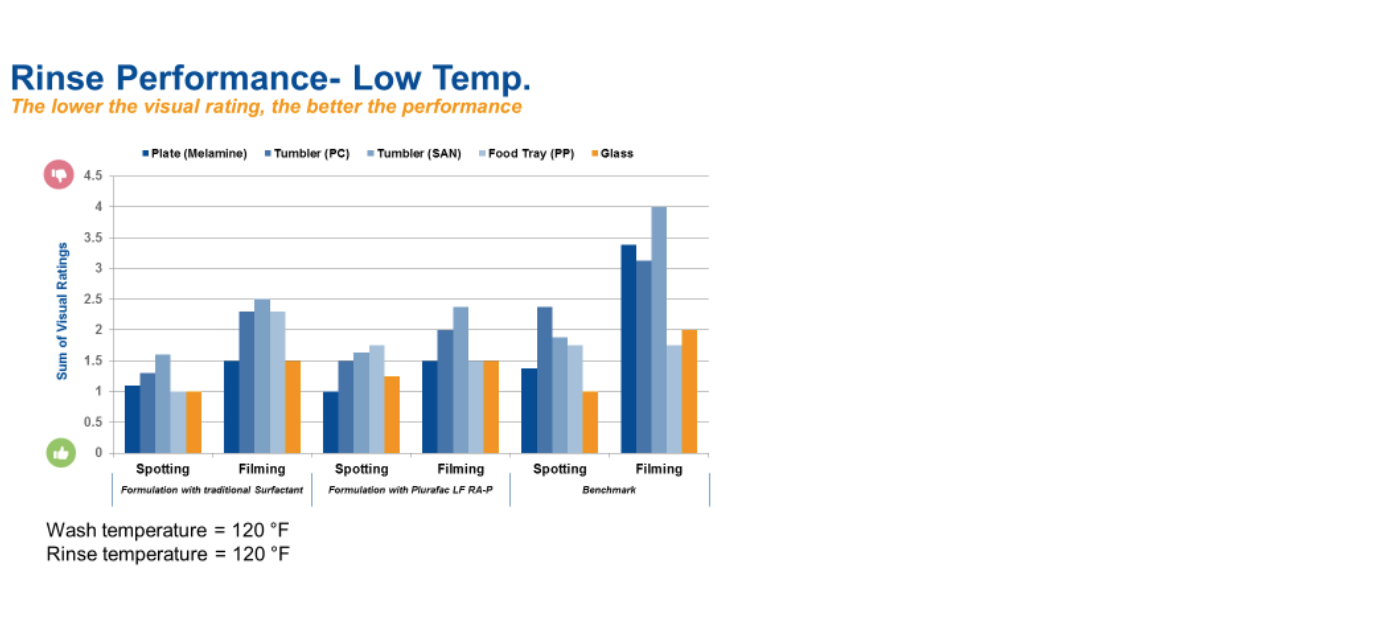
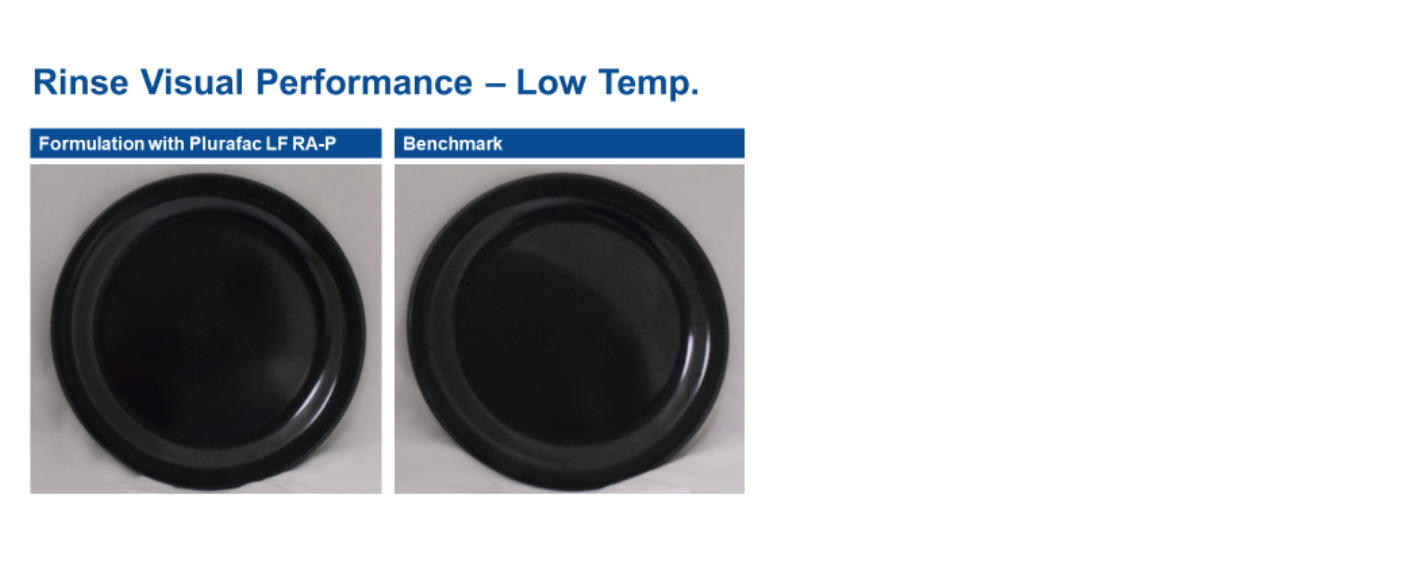
Foaming Behavior
Foaming can be a problem in cleaning processes that involve intensive mechanical action. One method of testing foam formation that closely corresponds to the conditions encountered in I&I warewashing is to measure the efficiency of the spray arm within the dishwasher. The rotating spray arm is slowed down by foam, so the higher the rate of revolution, the less foam is present. During this test, egg is added to encourage foaming.In the spray arm efficiency test, the formulation with Plurafac® LF RA-P performed better than the formulation with the traditional surfactant but delivered slightly more foam and less efficiency than the benchmark. The Plurafac LF RA-P formula still delivered nearly 80% efficiency, whereas the formulation with the tradition surfactant achieved just above 60% efficiency.
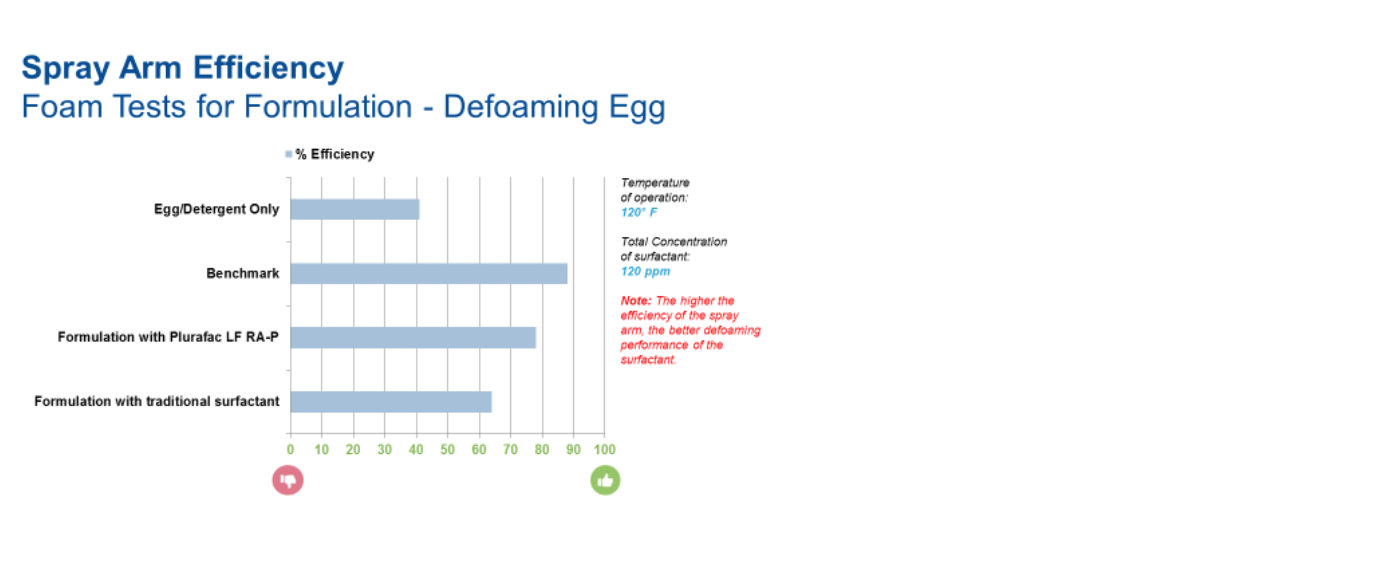
The self-foaming behavior of Plurafac® LF RA-P is similar to the benchmark, and significantly better than the formulation with the traditional surfactant.
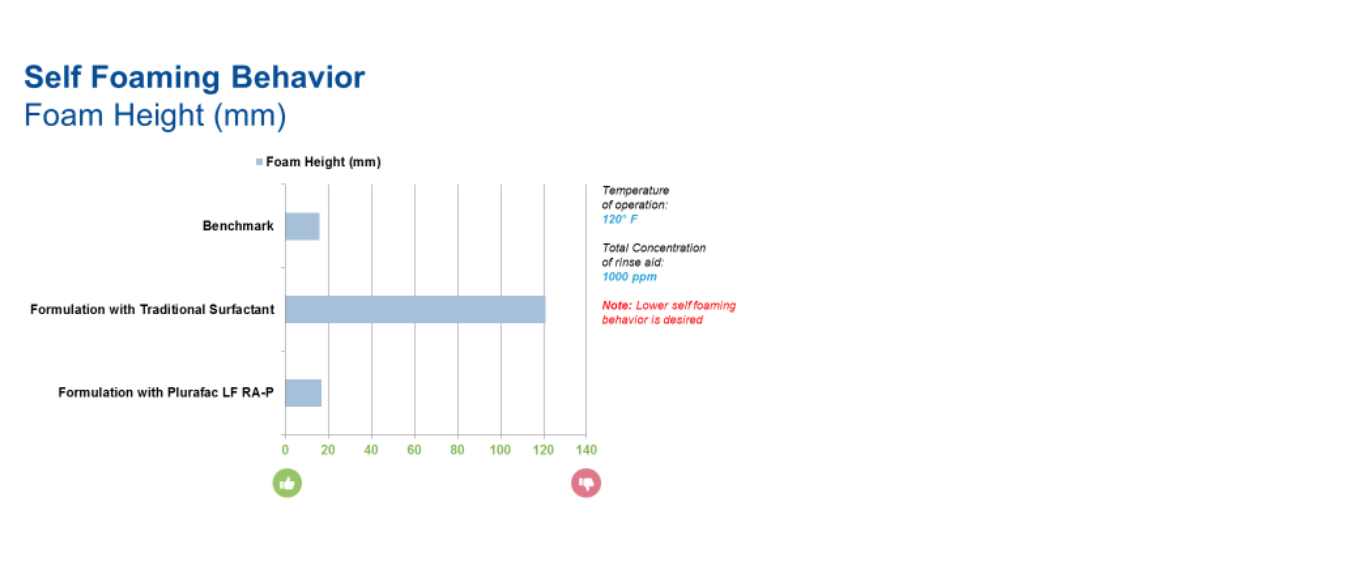
Conclusion
Plurafac® LF RA-P can help institutions reduce costs associated with manually or mechanically drying plastics. In addition to demonstrating lower spotting and filming when compared to traditional surfactants, Plurafac® LF RA-P also exhibits low foam and can contribute to de-foaming properties in a rinse aid system. All of this adds up to greater warewashing efficiency and more spot-free dishes for institutions.


